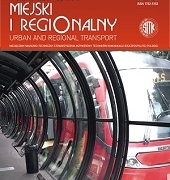Abstract 7/2018
Table of content
Norbert Chamier-Gliszczyński – Issues of monitoring and assessment in the planning of sustainable urban mobility
Urszula Duda-Wiertel – Consequences of accessibility parking space change in vulnerable city centre area
Arkadiusz Drabicki, Andrzej Szarata, Rafał Kucharski – Simulation analysis of the 3rd and 2nd ring road development schemes in Cracow and their impact upon the city road network performance – possible implications of the induced traffic demand
Danuta Bartkowiak – 200 Rocznica urodzin inż. Ernesta A. Malinowskiego 200th Anniversary of Birth of Ing. Ernest A. Malinowski
Jacek Malasek – The citywide impact of replacing private cars with shared services
Abstracts
Norbert Chamier-Gliszczyński
Issues of monitoring and assessment in the planning of sustainable urban mobility
Abstract: The article covers issues of monitoring and assessment in the planning of sustainable urban mobility. The analysed issues constitutes an essential element of the accepted plans of sustainable urban mobility. The process of monitoring and assessment has been defined; furthermore, an identification was performed of the characteristic elements of the analysed processes. Taking into consideration the complexity of the issue, a model of monitoring and the assessment of the plan of sustainable urban mobility have been determined, where the structure of the mobility network, the model of travellers, the organization of mobility and the set of the assessment indices of the plan of sustainable urban mobility were distinguished as its elements. The methodology used to formulate the assessment indices of the plan under consideration was presented at the stage of the description of the model structure elements. When identifying the real assessment indices, references were made to the already developed and accepted plans of sustainable urban mobility. On this basis, an analysis of the functioning of specified assessment indices on the example of these plans has been carried out.
Key words: monitoring, assessment, assessment indices, plan of sustainable urban mobility
Urszula Duda-Wiertel
Consequences of accessibility parking space change in vulnerable city centre area
Abstract: The article presents parking space shortage phenomena and possible effects (in particular economic effects) of interference on the level of accessibility of parking space in the central areas in big cities. These conclusions are based on own study carried out in the downtown area of Cracow. According to a literature review and conducted surveys and field measurements, in areas with low availability of vacant parking space (centre of big cities) there is traffic caused only by searching for a vacant spot to park the vehicle (so-called search traffic). Search traffic is an imposed movement, depending on the current parking situation of the area, intensifying (often occurring in the downtown areas) congestion on the street network. The share of traffic caused by the search for a vacant parking spot in general traffic is diversified, and the costs for the users of the transport system generated by this driving, unnecessarily increase the level of costs from transport. On the base of the research, economic costs of time lost by drivers and passengers during searching for parking, the costs of their vehicles as well as the level and costs of air pollution emission have been estimated. Determined values of economic losses and costs, resulting from traffic only in order to find a vacant parking spot on a business scale for a week, month or year generate very significant losses. They indicate a scale of savings that can be achieved by eliminating or even only reducing the number of cars moving only and exclusively for this purpose on the streets of downtown. The costs of the searching process were compared with the average travel costs to the city centre by individual car and public transport.
Key words: parking, paid parking zone, transport costs, environmental protection
Arkadiusz Drabicki, Andrzej Szarata, Rafał Kucharski
Simulation analysis of the 3rd and 2nd ring road development schemes in Cracow and their impact upon the city road network performance – possible implications of the induced traffic demand
Abstract: This article presents simulation analysis results related to the so-called induced traffic phenomenon, which can be often observed in case of road investment projects in urban areas: new road schemes, capacity expansion and widening projects etc. often bring short-lived improvements, which in longer run are likely either to become much lower or even disappear altogether. This is related to the traffic demand elasticity, i.e. additionally generated traffic demand which results from enhanced quality of service in road network – a crucial phenomenon, as minor growth in traffic demand can substantially erode the projected benefits, and ultimately, in some cases it may even shift the overall result of road effectiveness assessment process. The paper describes analysis works carried out within the Cracow city macrosimulation model, whose objective was to investigate the possible impact of 2 major proposed road schemes in the western part of the city: construction of a new high-quality section of the 3rd (outer) ring road, and, further on, capacity reduction along the 2nd (inner-city) ring road. Simulation results indicate the potential scale of changes in road network performance due to possible shifts in travel activity patterns (i.e. demand elasticity). These show that the construction of the 3rd ring road would indeed bring substantial improvements in road network, but the scale of projected benefits would be substantially lower once induced traffic would be accounted for, and only further reduction of the 2nd ring road capacity would allow to reduce effectively the traffic volumes in the inner-city area. Moreover, inclusion of the demand elasticity effect in the 3rd ring road assessment process indicates that the actual benefits for road traffic (as measured e.g. by mean travel speed) would not deteriorate much on the city-wide scale once further reduction of the 2nd ring road capacity would take place. These results demonstrate that both projects seem to be consistent with the long-term development policy of the Cracow city transport system.
Key words: Cracow, transport model, Cracow 3rd ring road, demand elasticity, induced traffic
Danuta Bartkowiak
200th Anniversary of Birth of Ing. Ernest A. Malinowski
Abstract: In 2018, we celebrate not only the 100th anniversary of Poland’s independence, but also the 200th anniversary of the birth of one of our most famous engineers – Ernest A. Malinowski, until recently the world’s highest author, the Trans-Andean Railways in Peru, the miracle of 19th century technology. Malinowski has not lived to Polish independency, but with all his life and work he glorified the name of his homeland brutally erased from the map of Europe by the invaders. The Polish Association of Engineers and Technicians of Transportation (SITK RP) announced the year of 2018 – the Year of Ernest Malinowski and gave its patronage to the jubilee celebrations, where the Embassy of the Republic of Peru also contributes. The plan abounds in numerous and interesting cultural and scientific events.
Key words: Ernest A. Malinowski, Trans-Andean Railways, railway construction, Polish engineers in exile
Jacek Malasek
The citywide impact of replacing private cars with shared services
Abstract: New technologies in the field of communication, digitalization and automation make possible further development of the transportation services (organized by a city or private companies), such as car sharing and a ridesharing. Testing of electric, autonomous vehicles car sharing and ridesharing is in progress, helping in particular the people with special mobility needs. New business models for car/ride sharing are emerging. Research on coexistence of autonomous vehicles car sharing with traffic dominated for a long time by traditional cars is of great importance. Modeling scenarios with very optimistic results on several urban areas are continued for some big European cities, where the impact of a full scale car sharing system on people mobility is investigated. Simulation results in the Lisbon Metropolitan Area are very encouraging: the total number of vehicle kilometers, comparing with present situation , is lower by 55%, CO2 emissions are lower by 62% and 95% of parking areas could be changed for recreation functions. Results obtained during analyses for the Helsinki Metropolitan Area are more or less similar.
Key words: car/ride sharing, urban planning, innovative technologies

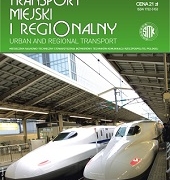
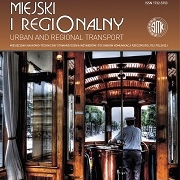
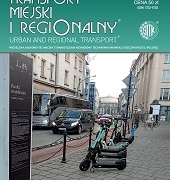 SITKRP
SITKRP 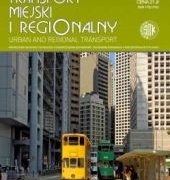 SITK RP
SITK RP 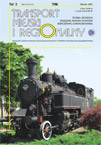 SITK RP
SITK RP 